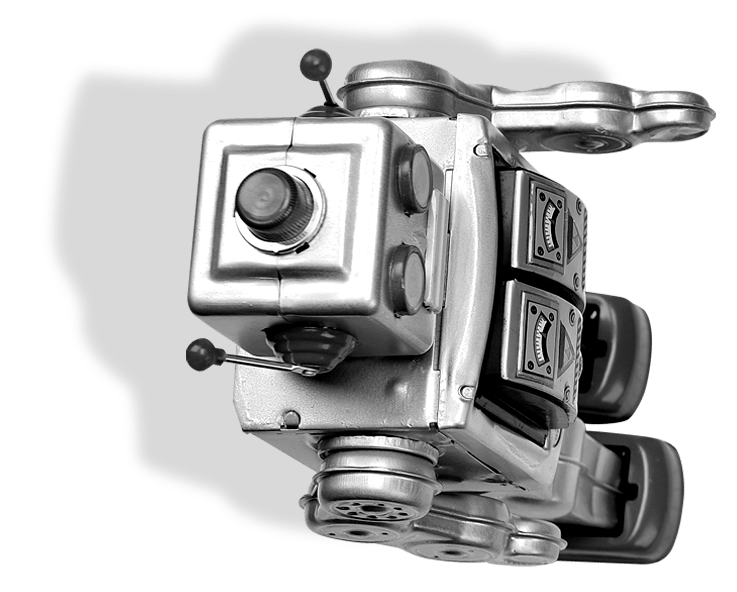AI’s impact on the tech skills of tomorrow
AI is fundamentally altering our jobs and the tech skills we need to perform them. New research by ServiceNow and Pearson examines how AI will shape the evolution of workplace expertise over the next five years.




The changing face of tech talent
Companies worldwide are grappling with a tech talent gap that could cost them $6.5 trillion by 2025, according to IDC. At the same time, automation technologies are disrupting global labor markets, automating some jobs entirely while augmenting others by removing boring, repetitive tasks.
To compensate, business leaders must fundamentally rethink who and how they hire. By reskilling workers and placing them in higher-value roles, they can close the talent gap and position themselves for success in a world defined by human/AI partnership.
of global enterprises face a severe IT skills shortage
Source: IDC




















AI makes work more human
Future-proofing the workforce begins with understanding the effect AI will have on the skills employees need in the near future. This will inform how business leaders reskill their employees and hire new tech talent.
The more we allow machines to do the kind of things they’re good at, the less humans have to behave like machines.
Interestingly, the data shows that as automation eliminates repetitive tasks, the pendulum will swing toward the distinctly human skills of communication, creativity, and analytical thinking. Simply put, the more we allow machines to do the kinds of things they’re good at, the less humans will have to behave like machines.
By taking on highly technical tasks, programs such as ChatGPT can open the door for people who have been overlooked by the tech industry. Business leaders can bridge the talent gap by tapping into new sources of talent—including non-tech workers whose skills transfer nicely into a more human-centric tech world.





















To fully understand AI’s effect on the skills and tech positions of the future, ServiceNow’s research partner, Pearson, tracked the likely impact of 16 disruptive technologies on more than 6,500 occupations in the U.S, U.K., Germany, India, Australia, and Japan.
Pearson’s data scientists then created machine learning models to analyze the more than 30,000 skills and 26,000 tasks required to do these jobs, predicting the effect on each from automation and augmentation, and identifying the easiest migration paths to jobs of the future.
Dr. Richard George, Pearson’s VP of workforce apps and analytics, tells us more.
Insight into the global labor market
Tech Impact
Automation
Augmentation
Added Jobs
AI-driven modeling of technological transformation
Tasks (26,620)
Jobs are made up of tasks — discrete activities that require specific skills, knowledge and personal attributes to perform.
Occupations (5,608)
Using each country’s granular census or labor market data, we can map the distribution of jobs to our proprietary ontology. Our ontology is kept up to date by the processing of 10M job ads each month.
Workforce Data
Census and labor market datasets were sourced from the governments of U.S., U.K., Germany, Australia, India, and Japan.





Lorem ipsum dolor sit amet, consectetur adipiscing elit, sed do eiusmod tempor incididunt ut labore et dolore magna aliqua. Eleifend donec pretium vulputate sapien nec. Ridiculus mus mauris vitae ultricies leo integer. Nunc non blandit massa enim nec dui nunc mattis enim. Nulla facilisi morbi tempus iaculis urna id volutpat.
Sed libero enim sed faucibus turpis in eu mi bibendum. Elementum tempus egestas sed sed risus pretium quam. Turpis cursus in hac habitasse. Id consectetur purus ut faucibus pulvinar. Bibendum ut tristique et egestas quis ipsum suspendisse. Tempor orci dapibus ultrices in iaculis nunc sed augue lacus. Tellus mauris a diam maecenas.
AI around the globe
Interaction models
The tech worker deficit, country by country
Technology has shaped the workforce throughout history, perhaps no more so than today. Every industry will feel the push and pull of automation—some jobs will be eliminated, others augmented, and many created.
That said, not all countries will be affected equally. The data below reflects the total number of jobs—both traditional and tech-related—that could be augmented or automated, and how the effects will be balanced out with the growing demand for tech talent.
By taking into account the existing tech talent gap and combining it with the tech jobs needed to support the growing demand for global digital transformation, we find that automation will create new opportunities. With the right reskilling, non-tech workers whose jobs are affected by AI can step into the tech roles of the future.
Workforce automatable
These FTEs in roles affected by automation will need reskilling and upskilling.
Capacity gain from augmentation
This is the equivalent capacity gained in 5 years due to augmentation. Workers in roles benefitting from augmentation will have fewer routing tasks, so will benefit from upskilling to maximize their impact in the remaining non-augmentable tasks.
ServiceNow is uniquely placed to use workplace data insights to enable the future of work through our market job specializations.
Potential tech jobs added
These additional jobs will also require training and reskilling.
United States deficit of workers
5.9M
4.9M
23.5M
India deficit of workers
4.7M
4.6M
16.2M
Germany deficit of workers
1.2M
1.3M
5M
Australia deficit of workers
0.4M
0.3M
1.4M
2027
2025
United Kingdom deficit of workers
1.2M
1.3M
5M
Japan deficit of workers
1.6M
2M
7.9M
Capacity gain* %
Wholesale and retail trade
Manufacturing
Administrative and support services
Accommo-dation and
food service
Health and social care
Automation %
2.3M
2.1M
2.6M
1.8M
6.3M
United States
Productivity gains from automation and augmentation through 2027
Capacity gain* %
Professional, scientific &
technical services
Manufacturing
Administrative & support services
Wholesale &
retail trade
Health &
social care
Automation %
400K
498K
512K
524K
1.12M
United Kingdom
Productivity gains from automation and augmentation through 2027
Capacity gain* %
Automation %
Wholesale and retail trade
Manufacturing
Administrative &
support services
Professional,
scientific &
technical
services
Health &
social care
493K
1.37M
484K
380K
769K
Germany
Productivity gains from automation and augmentation through 2027
Other service activities
Financial &
insurance
Manufacturing
Accomodation
& food service
Wholesale &
retail trade
Health & social care
Transportation & storage
457K
1.82M
346K
524K
2.3M
536K
341K
Capacity gain* %
Automation %
Japan
Productivity gains from automation and augmentation through 2027
Capacity gain* %
Automation %
International
organization services
Manufacturing
Agriculture, forestry & fishing
Wholesale &
retail trade
Construction
Transportation & storage
3.65M
1.31M
1.27M
858K
3.74M
1.88M
India
Productivity gains from automation and augmentation through 2027
Capacity gain* %
Automation %
Financial & insurance
Manufacturing
Professional, scientific
& technical services
Wholesale & retail trade
Health & social care
Transportation
& storage
78K
142K
123K
110K
384K
143K
Australia
Productivity gains from automation and augmentation through 2027
Circle size indicates number of automatable jobs.
*Capacity gain is time freed up from use of augmentation technologies
Industries across countries will be affected by AI differently.
In the U.K., Japan, and the U.S., automation will affect twice as many workers in retail as in any other major industry. But it will also create twice as many new tech jobs for people who know how to put these technologies to work. In fact, 1 million additional full-time tech jobs will be created to support the implementation of emerging technologies in the U.S. retail industry.
In India, however, where physical processes have yet to be as altered by automation as they are in other countries, the manufacturing industry will experience the greatest change. Click below to see how industries will fare by country.
Talent transformation by industry
The global workforce is at an inflection point, with AI driving opportunities for those with access to the right training.
Consider this: By 2027, within the ServiceNow ecosystem in the six countries surveyed, more than 1 million additional jobs matching existing roles will be required to support advances in technology. In addition, the research identified eight in-demand roles for which ServiceNow currently doesn’t have skills profiles. Over five years, these future roles will create more than 1.5 million jobs across our surveyed markets.
Based on this data, Servicenow is working to expand its skills portfolio, worker profiles, and credentials—but this is not a ServiceNow-specific phenomenon. As AI reshapes jobs and the expertise needed to perform them, business leaders should prepare by developing the training pathways their employees need to successfully reskill for these future roles.
New roles lead to new opportunities
Talent requirements by role in 2027
Application
Developers
Implementation
Engineers
Technical
Architects
Systems
Administrators
Process
Analysts
Jobs added
Current ServiceNow roles
250K
200K
150K
100K
50K
0K
Data
Analyst
Platform
Owners
Product
Owners
Flow
Automation
Engineers
Technical
Project
Managers
Machine
Learning
Engineers
Change/
Adoption
Specialists
Help Desk
Support
Agents
Jobs added
Future "net-new" ServiceNow specializations
250K
200K
150K
100K
50K
0K
USA
GBR
IND
DEU
JPN
Now that we understand which industries will be affected by AI, we can identify workers in each of those industries whose skills are the most easily transferable to the tech jobs of the future.
For example, we know that manufacturing will be a highly affected industry in India. But our research shows that fishery workers in India have the core skills to become help-desk agents. Developing these and other career migration paths is especially important given the effect of automation on these positions and the need for new tech talent across the board.
Tapping into transferable business skills
Reskilling opportunities in the United States
Reskilling opportunities in the United Kingdom
Reskilling opportunities in Germany
Reskilling opportunities in Japan
Reskilling opportunities in India
Reskilling opportunities in Australia
FTEs at risk, 2027
Unimpacted FTEs, 2027
Top matched ServiceNow role (Job fit %)
The research has also revealed ways in which certain existing positions will evolve when augmented by AI.
Using the role of system administrator as an example, we found that 9.3% of their current tasks could be automated and 39.7% of their tasks could be augmented. This will lead to up to 13 hours each week being freed up by AI automation and augmentation. Based on an analysis of 32 capabilities identified as crucial to all roles of the future, sysadmins must be highly proficient in these five areas by 2027:
- Foundational IT skills
- Cyber awareness
- Digital collaboration
- Digital communication
- Learning
Ideally, sysadmins should use this opportunity to learn new skills or train for a new role to help move the business forward. On the flip side, business leaders should identify opportunities to keep their sysadmins motivated, engaged, and on a career growth plan. When viewed through this lens, upskilling to relevant, future-demand roles is key to staff retention.
AI’s impact by role
AI's impact by task, time, and proficiencies
Impact on tasks
Hours freed up by
automation/augmentation
Five areas of profficiency by 2027
- Foundational IT
- Digital collaboration
- Learning
- Machine learning & AI
- Statistics & predictive models
System administrator
Impact on tasks
Hours freed up by
automation/augmentation
Five areas of profficiency by 2027
- Foundational IT
- Statistics & predictive models
- Machine learning & AI
- Cyber awareness
- Programming
App developer
Impact on tasks
Hours freed up by
automation/augmentation
Five areas of profficiency by 2027
- Foundational IT
- Statistics & predictive models
- Machine learning & AI
- Cyber awareness
- Programming
Process analyst
Five areas of profficiency by 2027
- Personal learning & mastery
- Achievement focus
- Foundational IT
- Agility
- Collaboration
Impact on tasks
Hours freed up by
automation/augmentation
Implementation consultant
Five areas of profficiency by 2027
- Foundational IT
- Critical thinking Personal learning & mastery
- Digital collaboration
- Learning
- Digital communication
Impact on tasks
Hours freed up by
automation/augmentation
Implementation engineer
Five areas of profficiency by 2027
- Foundational IT
- Statistics & predictive models
- Machine learning & AI
- Cyber awareness
- Programming
Impact on tasks
Hours freed up by
automation/augmentation
Junior app developer
Five areas of profficiency by 2027
- Foundational IT skills
- Cyber awareness
- Digital collaboration
- Digital communication
- Learning
Impact on tasks
Hours freed up by
automation/augmentation
Technical architect
Five areas of profficiency by 2027
- Digital communication
- Cyber awareness
- Research & problem solving
- Operationalizing data
- Learning
Impact on tasks
Hours freed up by
automation/augmentation
Master architect
System administrator
App developer
Process analyst
Implementation consultant
Implementation engineer
Junior app developer
Technical architect
Master architect
Meet Cheyenne Saulnier
Cheyenne Saulnier always had a penchant for technology, but she never thought she would find her place in the IT industry. After all, she was working in the mailroom—not your traditional route to a high-paying tech position. When her strong communication and service skills were noticed by IT leaders within her organization, she was invited to train as a ServiceNow system administrator.
Cheyenne’s story is notable but not unique. As technology platforms become more accessible, it becomes easier for people without programming and other tech-related backgrounds to work in IT. All they need is a desire to learn and access to the right training programs.
From the mailroom to sys admin standout
As AI becomes more embedded in the workplace, leaders who ignore its impact on the workforce do so at their own peril. Yet, while disruption is inevitable, there will be tremendous opportunities to create new, more human—and, yes, more productive—ways of working.
RiseUp with ServiceNow is a new global training initiative created to spark our tech talent transformation. By building comprehensive programs accessible to anyone with the desire to learn, we open doors to the tech roles of the future. When we connect with and cultivate a new breed of IT worker, we fill the tech talent gap—and that’s a win for our organization, employees, partners and, ultimately, our customers.









